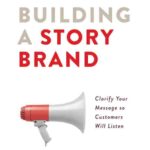Have you ever purchased a desktop computer with the intention of upgrading it down the road—but never actually did? You likely paid extra for that flexibility. And yet, even when newer components hit the market, you probably never bothered to crack open the case.
I’ve done it. And I’m willing to bet you have, too.
We convince ourselves that buying optionality is worth it, even if we never take advantage of it. This isn’t just a fluke—it’s human nature. Behavioral economists have studied this tendency extensively, and the truth is simple: we hate closing doors, even ones we never plan to walk through again.
Take my American Express card. For years, I held on to it despite high annual fees and the fact that many places I shopped didn’t accept it. The slogan, “Membership has its privileges,” echoed in my mind—even though I couldn’t tell you what those privileges were. But giving it up felt like losing status, a form of loss I irrationally wanted to avoid.
Or consider the health insurance plan I had for years. It was grandfathered in. The fine print told me that if I switched to a cheaper plan, I could never go back. That uncertainty—that fear of losing something potentially valuable—kept me locked in longer than it probably should have. Even when better options were on the table, I hesitated.
These are classic examples of what behavioral economists call Loss Aversion, a key principle within Prospect Theory, developed by Daniel Kahneman and Amos Tversky. Their research showed that people experience the pain of losing something more intensely than the pleasure of gaining something of equal value. In other words, losses loom larger than gains. This insight isn’t just useful for understanding personal decisions—it’s incredibly powerful for shaping how we design products, services, and pricing strategies that align with real, emotional customer behavior.
The Power of Open Doors
Dan Ariely, a behavioral economist and author of Predictably Irrational, conducted a fascinating experiment that perfectly illustrates this bias. Participants played a computer game where they earned money by clicking on doors. Each door opened to a different room with varying reward values. The twist? Doors that weren’t clicked would eventually disappear. What did participants do? They kept clicking on doors—not because they offered the highest payoff—but to keep their options open. Even when it meant earning less money.
That’s the irrational power of potential. We want to preserve our options—no matter how hypothetical or unnecessary they are—because the possibility of losing them feels more painful than the benefit of gaining something new.
How Smart Businesses Use This Bias to Drive Revenue
So, how can you, as a business owner or marketer, use this insight?
Here are a few strategic ideas:
- Offer Limited-Time Options
Create products or services that disappear if not acted upon. Scarcity and urgency play right into a customer’s fear of losing an option. Amazon’s “Only 3 left in stock” or airline sites warning “Prices will increase in 1 hour” are powerful examples. - Build Tiered Memberships
Offering tiered pricing (e.g., Silver, Gold, Platinum) appeals to a customer’s fear of missing out on perks—even if they don’t use them. Think of it as the “American Express effect.” Many won’t downgrade just in case they might need those benefits. - Use “Grandfathered” Language
Let customers know that if they leave a current plan or deal, they won’t be able to return. This “you can never go back” framing is emotionally potent, especially if people fear regulation changes or future price hikes. - Create Upgradable Systems—But Gate the Upgrades
Like with computers, offer base products with future potential (modules, add-ons, or plugins), even if only a fraction upgrade. The allure of “keeping the door open” boosts initial sales and allows for future upsells. - Don’t Show All the Benefits Up Front
If users don’t fully understand what they might lose, they’re more likely to stay. Mysterious benefits (as frustrating as it sounds) can work in your favor. “Unlock premium features” works better than listing everything—especially if those features aren’t even fully developed yet.
Why This Works
It’s not about tricking people—it’s about understanding human psychology. By designing your business around the natural tendencies of your customers, you’re meeting them where they are.
People don’t always make rational decisions. But they consistently respond to the same emotional triggers—especially the pain of loss.
As behavioral economist Richard Thaler put it: “If you want to encourage some behavior, make it easy. If you want to discourage it, make it hard.” Keeping doors open feels easy. Closing them feels scary.
How could you redesign your products, pricing, or customer experience to leverage your audience’s desire to keep their options open?












